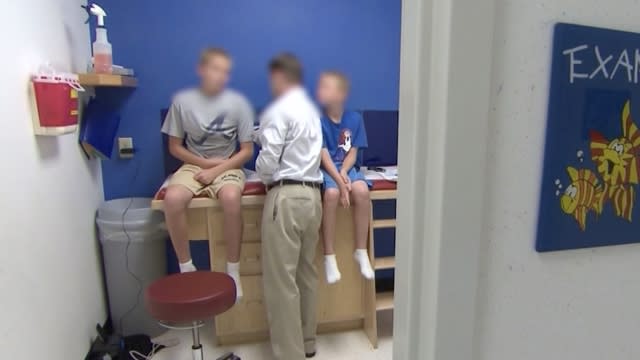Study finds 1 in 10 US children don't have a primary care doctor

Dr. Steven Furr has been a family physician in Jackson, Alabama, for 39 years. He is also the president of the American Academy of Family Physicians.
"At one time we had five board-certified family physicians. Now we only have three and we're struggling to find anybody to join our practice," said Furr.
The demand continues to increase. Research shows it can take an average of 26 days to get to see a family doctor in the U.S.
A new report out Wednesday shows how that impact hits patients. More than 1 in 10 U.S. children don't have a primary doctor, and more than 1 in 4 adults don't have one either. There has been a 36% jump in the share of U.S. children without a usual source of care over the last decade.
Dr. Yalda Jabbarpour is the lead author of the study and medical director of the Robert Graham Center.
"Especially for first time parents who really don't have any idea if this is normal, it's so important to have your primary care clinician there to help you through that. Vaccinations can be missed and those are critical for children," said Jabbarpour.
Jabbarpour says this impacts the continued rise seen in growing mental health issues in children and adults.
"Primary care is the first place where that gets identified. So not having a primary care clinician can be really detrimental in terms of getting on top of those issues early," said Jabbarpour.
Burnout and lower reimbursements add to the struggle to keep family doctors — or to appeal to medical students who may find specialties more lucrative. But Furr says he and doctors like him are specialists, and they need more company.
"It's not uncommon for me to treat their diabetes and hypertension while treating their UTI at the same time they're there for a visit. And that's the kind of personalized care we can give. At the same time, we know there are other problems. We know they recently got divorced. They're struggling to meet their light bills. They can't afford all the medicines that we might like to give them. So that is a unique specialty in that we really focus on the whole patient," said Furr.
Each March, medical students match to hospital residency programs, picking a specialty. 2023 saw the largest class matching to family medicine programs — about 4,500 future doctors. Experts hope this March it will be more of the same — worrying it still won't meet demand.
SEE MORE: Rising child care costs creating dilemma for working parents
